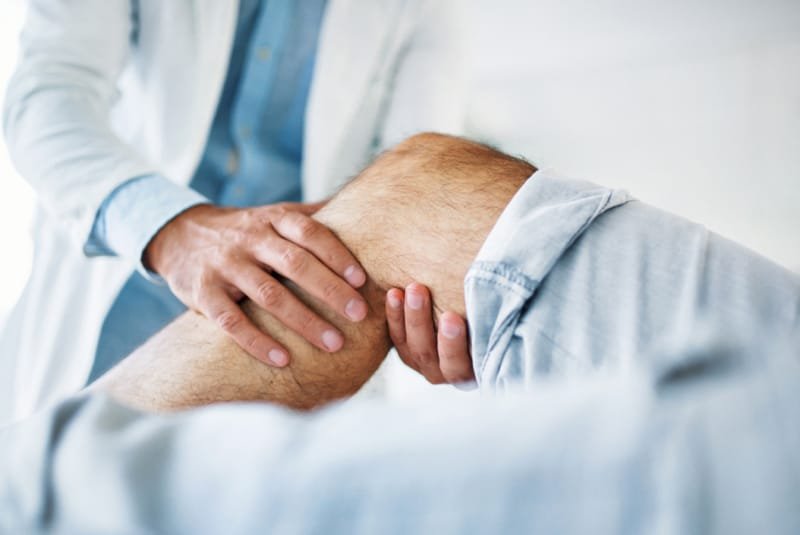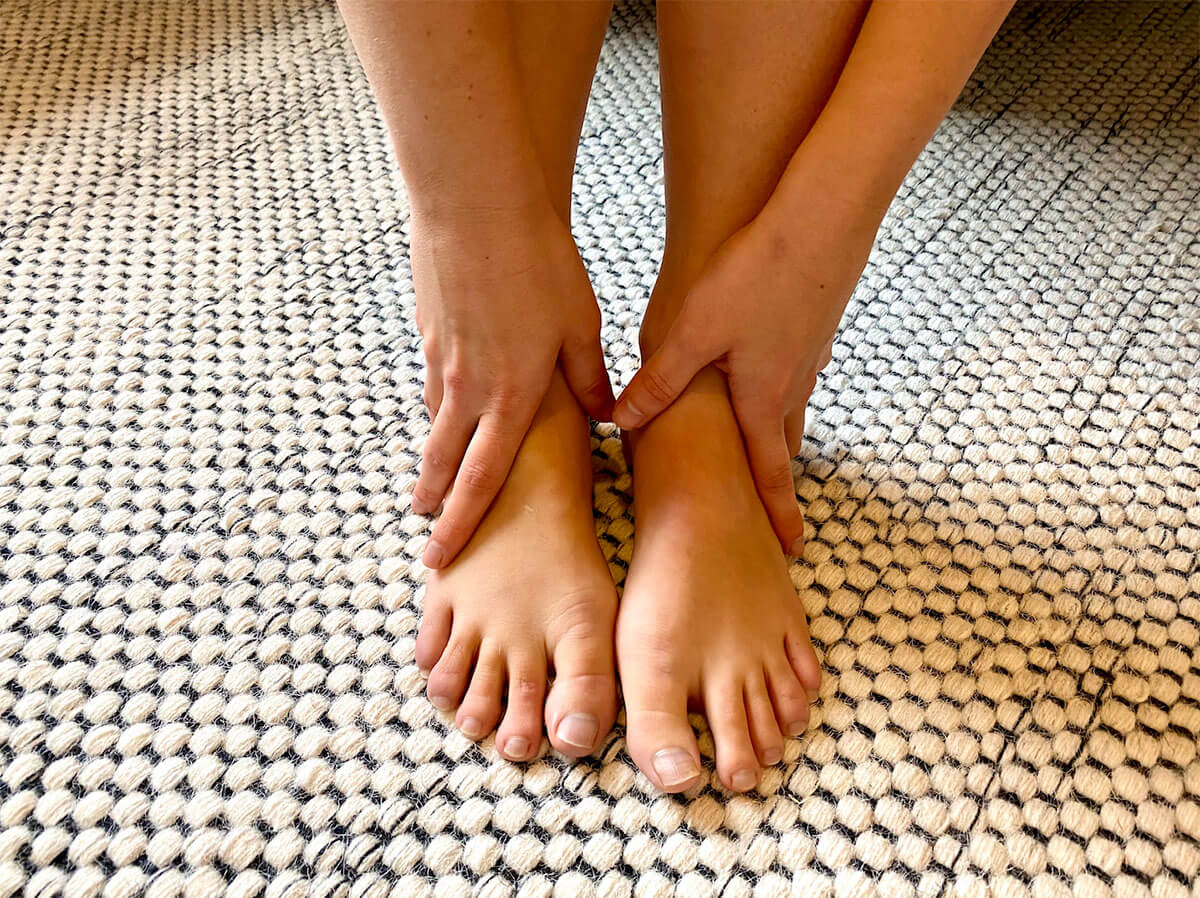Everyone has experienced it, most of us are afraid of it – but do we really know what pain is? Here, Physiotherapist and Clinical Pilates instructor, Lorien Slaughter gives us the science behind this unpleasant physical sensation and advice on how to cope with it.
Everyone has felt pain at some point in his or her life. At the same time, few know the answer to the question “what is pain?” or understand how pain works in the body. As a result, most people are frightened of it.
As a health professional, I meet people living with problems like back pain every single day of my working life. They are often (understandably) tired, frustrated and scared by their symptoms. Although their pain is real, the fear and misunderstanding surrounding this sensation is probably making it worse.
So, I’m here to teach you what pain is so that you can understand your own symptoms better. In the process, I’ll be answering some vital questions on the subject. Questions including: what happens to your body when you’re in pain? What changes occur when you’ve been in pain for a long time? And, most importantly, what can you do to solve pain?
If pain is a concern to you (and aside from reading this article), I’d suggest seeing a medical professional for advice. No one should be living in pain unsupported.
What do you think pain is?
This is such a great question. It’s something I ask my patients who are in pain as it really gives me an idea about their understanding, thoughts and beliefs on this subject. Their answers will then guide my treatment approach.
So, I’m asking you that question right now. What do you think pain is? Remember your answer as you read on.
When I pose this question to my clients, nine out of ten times they answer it by talking about a specific area of the body that is “damaged”. Rarely do they answer me in a way that shows me they understand what this pain signal is trying to tell them. After that, I follow up with the explanation I am about to give to you.
Please bear in mind that, what I’m going to tell you is backed up by great research in medical science, it might challenge the beliefs you hold about your pain and what causes it.
You see, pain is complicated, but I want to give you the full story. I try and give my patients the full story as well – which often involves some poorly drawn diagrams!

The science of pain
Now, I’m going to go into quite a lot of detail here but it will make sense why later – so bear with me.
In our body, our skin, muscles, tendons and fascia are extensively supplied with nerves. These nerves all have different nerve endings that are adapted to register different stimuli, such as changes in pressure, hot, cold or the presence of certain chemicals.
Let’s use the example of a nerve ending being stimulated in your foot to illustrate this point.
Say you’ve dipped your foot into a hot bath. The stimulus (the hot water) triggers an electrical message to be relayed down the primary nerve cell. This is called an action potential. It carries this message along the nerve from your foot up your leg to where it synapses (communicates) with a second nerve in the spinal cord.
This arriving electrical signal has to be of a certain strength to stimulate the secondary nerve (it has to meet a certain threshold) to fire off an action potential of its own. If it does the signal is transmitted along the second nerve in the spinal cord up towards the brain.
Again, if the signal is strong enough the message will be transferred to the third nerve in the chain. This then takes the electrical message up into the brain, which is where the experience is registered as either painful or not.
Emotions and environment linked to pain
Now, here’s the really important bit: this electrical signal is only part of the picture. The brain takes it into consideration with lots of other subjective environmental information.
Returning to our bath scenario, a whole host of other issues could affect how painful you find the water. These could include whether you think the hot water is dangerous or if you’ve had pain in this scenario before that got worse or better. Other factors, like whether you’re going through a divorce, moving house or have just fallen in love, could also alter your brain’s reaction.
All this sensory, ENVIRONMENTAL and SUBJECTIVE information is taken into account by the brain to answer one question: Do I feel threatened? If the answer is “yes” then the brain experiences pain.
Pain does not equal damage
Pain is not a measure of damage; it is an alarm system that is there to prevent harm.
It does this by measuring threat, when it’s high enough it will create pain and hopefully cause us to alter our behaviour and therefore avoid damage occurring. It wouldn’t work as an alarm system if it only let you know once tissue harm had occurred.
Is pain just in my brain?
Now, I know what you’re thinking.
You’re thinking that I’m saying that pain is only in your mind. Well, yes and no. What I’m saying is that the only place that you can experience pain is in your brain. The brain is where the electrical signals from your tissues mixes with other information in your brain such as your subjective state, thoughts and beliefs to answer the threat question.
I am definitely not saying that your pain isn’t real. If you feel it, it is real.
But, could your thoughts and beliefs be the primary cause of your pain? They could be, it’s hard to say – but they are certainly playing a role in the threat pain equation.
Some people will just have a pain that is absolutely and solely to do with the stimulus from their primary nerve endings and it’s a very healthy response!
Still, there are certainly instances when there can be little to no signals from the primary nerve endings. In those instances, thoughts and beliefs would almost solely be responsible for the pain someone feels.
Chronic pain and hurt not harm
Let’s talk about what happens when we have been in pain for a long time and how it can change our nervous system.
Chronic pain is usually defined by pain that’s lasted more than 3-6 months (although this is debated), long after when normal tissue healing should have occurred. If you’ve suffered with pain for a while, your nervous system can become over-sensitive.
In biological terms, this means that when nerve endings are stimulated often, they get better at reporting it. This is as a result of more nerve endings growing on the primary nerve. This allows a stronger signal to be sent. At the same time, the threshold at which an electrical signal from nerve to nerve is triggered can also lower over time, This makes it easier for each nerve to send a signal on.
On top of that, the secondary nerve can also multiply the signal by linking with other nerves to further strengthen the message travelling up to the brain. The mistake in the nervous system is that the signal is being amplified. The same stimulus is being picked up more by an increase in the primary nerve endings and sent on more easily by the lowering of the threshold. It also further amplified by the new connections with other nerves. This results in a much stronger message being sent to the brain.
In basic terms, this means that you end up experiencing more, and sometimes chronic, pain.
Treatments for chronic pain
Increasingly, chronic pain is being treated as a disorder of the nervous system. Interventions need to focus on the thoughts and beliefs of patients to stand any chance of dampening down the pain response. Using the appropriate level of exercise to help re-educate the nervous system that it is in fact safe to move is also important.
Ok, so what can I do to manage my pain?
Now we understand pain in a modern, scientific way, there’s a lot we can do about it.
Addressing the environmental factors and unhealthy beliefs around pain, can have very positive effects. For instance, getting more sleep, being supported by friends and healthcare professionals can be helpful.
Your body struggles to tell the difference between mental stress and physical stress. This means that any leeway you can get from either side will increase your overall capacity to tolerate stress of any kind. Meditating or by using an app like Headspace to help manage stress can help improve your mental state.
Changing the language we use, both as health practitioners and patients, is also important. Words like “damage” and “pain” automatically create a level of panic and worry. “Symptoms” can be a better alternative.
If you’re in pain, Physiotherapy can help
Additionally, seeking advice from a Physiotherapist is a great place to start if you have a pain that’s stopping you from doing what you want to do or preventing you from getting better.
We can talk things through with you, screen you for serious problems and design a plan of action for you.
If needed, we can refer for an MRI to rule out serious pathology. Thankfully, this is rarely required! Serious pathology would make up less than 1% of cases of lower back pain. There is also good evidence that people with back pain who get MRIs without needing to have worse outcomes. It plays into the fear that something serious is going on increasing the threat level which we now know is part of the threat pain equation.
The intervention with the highest success rates and the lowest incidences and serious complications is exercise.
Pilates for pain relief
Unless the cause of your pain or injury is a fracture, some level of exercise is the best thing for you to be doing. Clinical Pilates (like the Pilates we practice at Complete), in particular, is a great way to stay active when suffering with injuries and other symptom-causing conditions.
Clinical Pilates can also help people recover from all kinds of injuries. There’s a reason top spinal surgeons refer to us to help keep patients out of surgery. When surgery has been the only option, these patients are sent to us so we can get them moving again.
This is because Pilates helps dampen down pain responses. It does this when performed on the equipment; using the springs on machines like the trapeze table assists your movements which reduces symptoms. The springs also helps take the load off your muscles and tissues. This helps to reduce the impact on your nervous system and avoid a threat reaction.
Pilates also works on your co-ordination so you can improve body awareness and the efficiency of your movement. Learning to move in this way helps to reduce impact on the body, which in turn reduces any symptoms.
When it comes to rehabbing the body, Pilates is incredible at progressively loading the body. Using this method, we can slowly improve your strength and increase your body’s tolerance to load.
The final word: The most important thing to take from this blog is that pain does not equal damage it equals threat.
Aside from that, I also hope you come away with an understanding of the role stress and fear play in the pain equation. It’s not often talked about but, as we’ve already seen, these emotions can actually worsen or even cause your symptoms. This means that dealing with these emotions is an important part of pain management and recovery.
Remember, it is always advisable to seek professional advice with regards to diagnosis and management of injuries. Complete have teams of expert Physios and Clinical Pilates instructors here to support you.
To book in with Lorien, and find out how he can help you manage your pain, click here.
Education is key:
These blogs are designed to give information to everyone, however, it is important to remember that everyone is different! If you have not seen one of our therapists and have any questions about injuries, what you have read or whether this may be useful to you, please just ask. We are more than happy to help anyone and point you in the right direction. Our biggest belief is that education is key. The more you understand about your injury, illness and movement, the more you are likely to improve.








